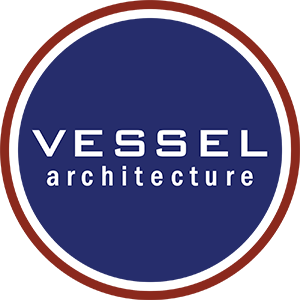How Do You Choose the Right Building Type?
One of the most critical early decisions when planning a new building is selecting the appropriate construction type. The International Building Code (IBC) defines five primary construction types—Type I, II, III, IV, and V—each with specific materials, fire resistance requirements, and allowable building areas. Within these categories, sub-classifications further refine the level of fire protection required.
How Construction Type is Chosen
Selecting the right construction type depends on multiple factors, including project goals, site location, and regulatory constraints. It is not a simple matter of saying, "I want to build a multi-family building, so it must be this construction type." Instead, construction type is determined based on the specific needs and constraints of the project.
For example, senior living developers often start with a target building size based on the number of units needed. Suppose a developer plans for 80 assisted living units and 20 memory care units, totaling approximately 80,000 square feet. If the project is in a suburban area, a two-story Type V-A (wood frame) construction is often suitable since there is enough land to spread out the building. However, if the same project is in an urban area with limited space, it would likely be built as a four-story Type II-B (noncombustible metal frame) structure to maximize the footprint.
Another consideration is building height restrictions. For instance, assisted living buildings classified as I-1 occupancy cannot exceed three stories if built with wood framing. However, a four-story wood-framed residential building classified as R-2 occupancy would be allowed. These height limitations are determined by both construction and occupancy type. Local building codes may also impose additional restrictions, with some jurisdictions prohibiting wood construction for specific occupancy types.
Material Quality and Construction Choices
The availability and quality of building materials also influence construction type selection. In the early 2000s through the mid-2010s, rapid construction led to a decline in the consistency of wood materials, making them less stable. Builders noticed an increase in warped and twisted lumber, making it more challenging to achieve high-quality construction. As a result, some developers prefer metal framing for better structural integrity, even though it is more expensive. While wood remains a common choice due to its cost-effectiveness, it inherently involves some trade-offs in quality and precision.
Occupancy Classification and Building Size Restrictions
Beyond construction type, the building code also classifies buildings based on their intended use, known as Occupancy Classification. These classifications impact how large a building can be and what safety measures are required.
Common Occupancy Classifications:
Assembly (A-1 to A-5): Theaters, restaurants, stadiums.
Business (B): Office buildings, banks.
Educational (E): Schools and daycare centers.
Factory and Industrial (F-1, F-2): Manufacturing facilities.
High Hazard (H-1 to H-5): Chemical plants, laboratories.
Institutional (I-1 to I-4): Assisted living, memory care, rehab facilities, correctional facilities.
Mercantile (M): Retail stores.
Residential (R-1 to R-4): Apartments, hotels, single-family homes.
Storage (S-1, S-2): Warehouses, parking garages.
Utility & Miscellaneous (U): Sheds, agricultural buildings.
Buildings classified under institutional and residential categories tend to have the most restrictive regulations due to the presence of sleeping occupants or confined individuals. In contrast, storage and utility structures face fewer restrictions.
The Role of Sprinkler Systems and Code Compliance
Sprinkler systems play a significant role in building safety and compliance. Some occupancy classifications mandate sprinkler systems based on building size, occupant load, or fire risk. These systems are regulated by the National Fire Protection Association (NFPA) and classified into:
NFPA 13: Wet system for commercial and larger residential buildings.
NFPA 13D: Dry systems for attics and parking garages.
NFPA 13R: Low-rise residential fire protection systems.
While the IBC (International Building Code) governs general building classifications, NFPA codes provide fire safety standards that often align with IBC but use different terminology. For instance, a Type V-A building in IBC corresponds to an NFPA V(111) classification, where walls, floors, and roofs all have one-hour fire ratings. Conversely, a Type V-B building aligns with NFPA V(000), meaning no fire ratings are required. Local jurisdictions determine which code standards apply, so verifying with the Authority Having Jurisdiction (AHJ) is critical in early project planning.
Let’s compare a standard multi-family building, classified as Residential R-2, built a few different ways:
Choosing the Right Construction Type
By understanding site constraints, project goals, and regulatory requirements, developers and architects can determine the most appropriate construction type early in the design process. Vessel helps clients navigate these decisions, balancing structural integrity, design aspirations, and compliance to create buildings that are safe, functional, and built to last.





